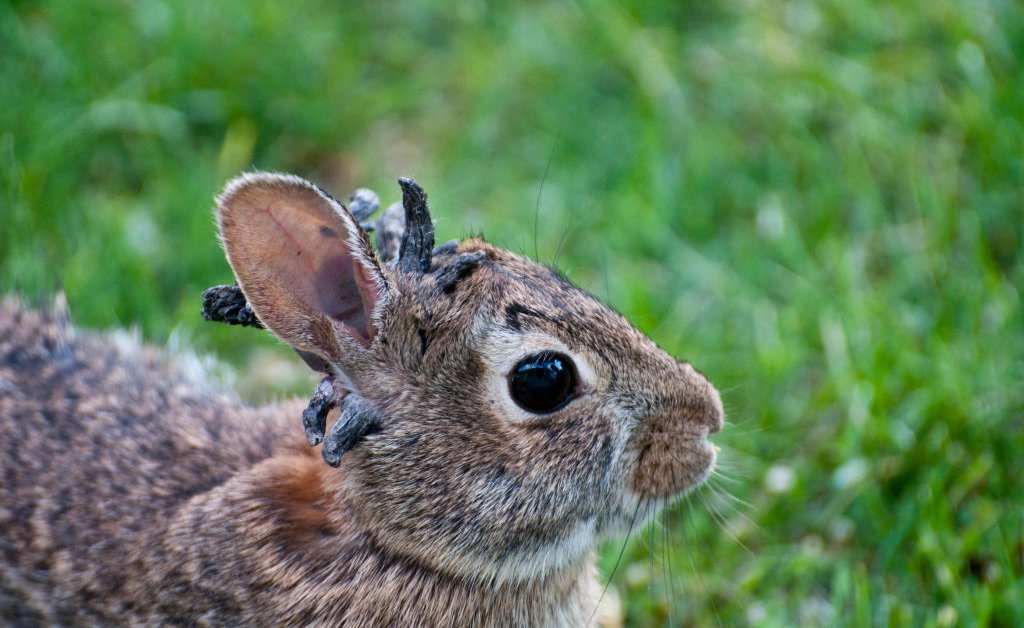Understanding Tularemia: Identifying And Preventing The Spread Of Diseased Rabbits In Colorado

Welcome to your ultimate source for breaking news, trending updates, and in-depth stories from around the world. Whether it's politics, technology, entertainment, sports, or lifestyle, we bring you real-time updates that keep you informed and ahead of the curve.
Our team works tirelessly to ensure you never miss a moment. From the latest developments in global events to the most talked-about topics on social media, our news platform is designed to deliver accurate and timely information, all in one place.
Stay in the know and join thousands of readers who trust us for reliable, up-to-date content. Explore our expertly curated articles and dive deeper into the stories that matter to you. Visit Best Website now and be part of the conversation. Don't miss out on the headlines that shape our world!
Table of Contents
Understanding Tularemia: Identifying and Preventing the Spread of Diseased Rabbits in Colorado
Colorado's stunning landscapes are home to a diverse range of wildlife, including rabbits. However, these adorable creatures can sometimes carry a serious disease: tularemia. Understanding tularemia, its symptoms in rabbits, and how to prevent its spread is crucial for both animal welfare and public health in the Centennial State. This article will provide crucial information for Colorado residents on identifying sick rabbits and minimizing the risk of tularemia transmission.
What is Tularemia?
Tularemia, also known as rabbit fever, is a bacterial infection caused by Francisella tularensis. While rabbits are a common reservoir, the bacteria can infect a variety of animals, including rodents, birds, and even humans. In Colorado, the risk of tularemia is present year-round, but cases tend to peak during warmer months when people are more likely to be outdoors engaging in activities that increase exposure.
Identifying Diseased Rabbits:
Recognizing a rabbit potentially infected with tularemia is critical to preventing further spread. While not all infected rabbits will show symptoms, watch out for these warning signs:
- Lethargy and Weakness: An unusually sluggish or weak rabbit may be unwell.
- Swollen Lymph Nodes: Look for noticeable swelling around the neck, groin, or under the jaw.
- Ulcers or Sores: Open sores or ulcers on the skin, particularly on the ears, eyes, or mouth, can be indicative of the disease.
- Respiratory Distress: Difficulty breathing or labored breathing can be a symptom.
- Pneumonia: Severe cases can lead to pneumonia, evidenced by coughing and labored breathing.
Preventing the Spread of Tularemia:
Protecting yourself and others from tularemia requires vigilance and preventative measures:
- Avoid Contact with Wild Rabbits: Do not handle wild rabbits, dead or alive. Even seemingly healthy rabbits can carry the bacteria.
- Proper Hygiene: Always wash your hands thoroughly with soap and water after handling any potentially contaminated materials, including soil or vegetation from areas where rabbits may be present.
- Protective Gear: Wear gloves and eye protection when working outdoors, especially in areas known to have rabbit populations.
- Tick Control: Ticks can also transmit tularemia. Utilize effective tick repellents and perform thorough tick checks after spending time outdoors.
- Safe Handling of Game: If hunting rabbits, use appropriate handling precautions, including wearing gloves and thoroughly cooking the meat to an internal temperature of 165°F (74°C). Never consume undercooked wild game.
- Report Sick Animals: If you encounter a rabbit exhibiting symptoms of tularemia, contact your local wildlife authorities or the Colorado Department of Public Health and Environment (CDPHE).
Human Symptoms of Tularemia:
While the symptoms in rabbits are important to recognize, understanding the human implications is equally critical. Humans can contract tularemia through various routes, including:
- Direct contact: Handling an infected animal or its carcass.
- Insect bites: Ticks, mosquitoes, and deer flies can transmit the bacteria.
- Inhalation: Breathing in contaminated dust or aerosols.
- Ingestion: Consuming undercooked infected meat.
Human symptoms can vary widely but may include fever, chills, headache, muscle aches, and swollen lymph nodes. If you suspect you've been exposed to tularemia, seek immediate medical attention. Early diagnosis and treatment with antibiotics are crucial for a positive outcome.
Resources:
- Colorado Department of Public Health and Environment (CDPHE): [Insert CDPHE website link here]
- Centers for Disease Control and Prevention (CDC): [Insert CDC website link here]
Conclusion:
Tularemia is a serious concern in Colorado, requiring a proactive approach to prevention and responsible wildlife interaction. By understanding the signs of disease in rabbits and taking appropriate safety precautions, you can significantly reduce your risk of exposure to this potentially dangerous infection. Remember, responsible outdoor recreation and awareness are key to protecting both human and animal health in the beautiful Colorado landscape.

Thank you for visiting our website, your trusted source for the latest updates and in-depth coverage on Understanding Tularemia: Identifying And Preventing The Spread Of Diseased Rabbits In Colorado. We're committed to keeping you informed with timely and accurate information to meet your curiosity and needs.
If you have any questions, suggestions, or feedback, we'd love to hear from you. Your insights are valuable to us and help us improve to serve you better. Feel free to reach out through our contact page.
Don't forget to bookmark our website and check back regularly for the latest headlines and trending topics. See you next time, and thank you for being part of our growing community!
Featured Posts
-
 Police Arrest Sparks Suspension For Rhode Island Assistant Ag
Aug 27, 2025
Police Arrest Sparks Suspension For Rhode Island Assistant Ag
Aug 27, 2025 -
 Trumps Controversial Flag Burning Order Constitutional Concerns And Public Reaction
Aug 27, 2025
Trumps Controversial Flag Burning Order Constitutional Concerns And Public Reaction
Aug 27, 2025 -
 Six Month Suspension For Rhode Island Prosecutor The Aftermath Of A Newport Arrest
Aug 27, 2025
Six Month Suspension For Rhode Island Prosecutor The Aftermath Of A Newport Arrest
Aug 27, 2025 -
 Four Times Keke Palmer Gave Us Unforgettable Memes A Birthday Retrospective
Aug 27, 2025
Four Times Keke Palmer Gave Us Unforgettable Memes A Birthday Retrospective
Aug 27, 2025 -
 Mariners 2026 Season Schedule A Complete Look Ahead
Aug 27, 2025
Mariners 2026 Season Schedule A Complete Look Ahead
Aug 27, 2025
 Gaza Hospital Bombing Trumps Reaction To Israeli Airstrike And Civilian Casualties
Gaza Hospital Bombing Trumps Reaction To Israeli Airstrike And Civilian Casualties
 Israeli Airstrike On Gaza Hospital Trump Condemns Killing Of Journalists And Medics
Israeli Airstrike On Gaza Hospital Trump Condemns Killing Of Journalists And Medics
